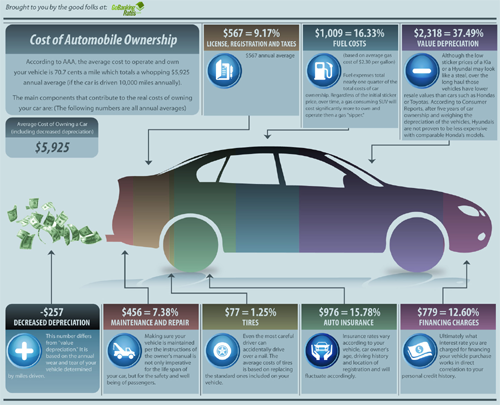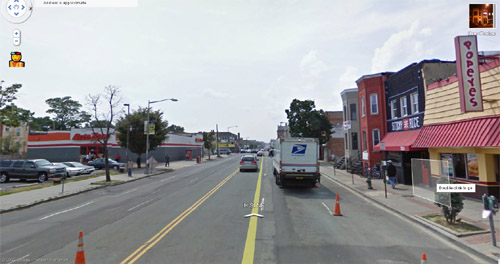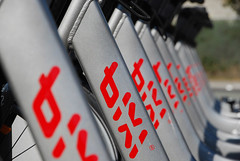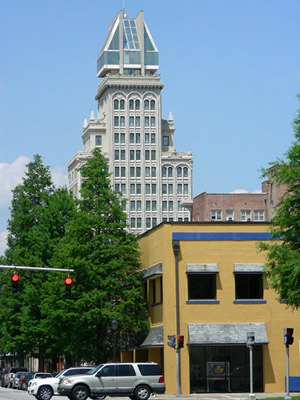|
Special Features





Image Libraries


|
|
Blog
According to this inforgraphic, it costs approximately $6, 000 per year to own a car, not including the actual purchase cost. That’s a little over $16 per day, on average. Costs will be higher for people who live far out in the suburbs and drive more than usual.

Click the image for a larger version.
Thanks to @BikeArlington for the tip. The image itself seems to come from The Big Picture blog, although I can’t find it anywhere there.
Average Rating: 4.8 out of 5 based on 177 user reviews.
May 28th, 2010 | Permalink
Tags: roads/cars, transportation

Today’s story in the Express about WMATA’s new fare structure featured this quote:

With apologies to Mr. Wasson, yes, higher fares are going to improve something. They are improving upon the drastically cut-down system that would be forced upon us if not for the fare hikes. For our money, we are getting more frequent buses, longer trains, and extended service hours. Not relative to what we had yesterday, but relative to the alternate system WMATA would have to put in place without more money.
Higher fares are unfortunate, but as I tweeted yesterday, exploding fares are preferable to imploding service. It doesn’t matter how cheap the system is if it’s unusable.
Average Rating: 4.5 out of 5 based on 199 user reviews.
May 28th, 2010 | Permalink
Tags: metrorail, transportation

Just a quick FYI that I’ve made a few minor changes to the home page. Nothing particularly worth explaining, but if it looks a little different to you that doesn’t mean you’re going crazy.
Average Rating: 4.7 out of 5 based on 253 user reviews.
May 27th, 2010 | Permalink
Tags: site

GGW is reporting that DC Council chairman Vincent Gray cut all funding for the H Street streetcar line last night at approximately 2:00 am.
Follow GGW today for the latest news, but in the mean time, call Gray’s office at 202-724-8032 and express disappointment.
Update: And now most of the funding has been restored. More thoughts later.
Average Rating: 4.4 out of 5 based on 224 user reviews.
May 26th, 2010 | Permalink
Tags: streetcar, transportation

Streetcars and buses both operate on city streets, in similar ways. So why go to the trouble and expense of building streetcars? Because there are in fact inherent differences that make one or the other better, depending on circumstances.

DC Circulator and DC Streetcar, to scale. These are not the same thing.
First, what’s not an inherent difference: The running way. Both streetcars and buses can, should, and do operate in both dedicated lanes and in mixed traffic with cars. When and where they do so can make a huge difference to a line’s effectiveness, but that decision is not dependent on the vehicle. The point of this list is to compare the modes when all other things are equal.
Streetcar advantages:
- Streetcars have greater capacity than buses.
Streetcars are bigger, longer, and can be combined into multi-car trains. They can carry many more passengers than any bus, even accordion buses. For corridors with ridership too high for buses to handle comfortably but not high enough to justify a subway, streetcars can be a good solution.
- Streetcars can be more affordable than buses over the long term.
While it’s true that streetcars cost more to build up front, that cost can be offset by operational savings year-to year, if the line carries enough passengers. Streetcars’ higher capacity means if there are lots of riders on a route, you can move them with fewer vehicles. Fewer vehicles means more efficient use of fuel and fewer (unionized and pensioned) drivers to pay. Streetcar vehicles themselves are also sturdier than buses, and last decades longer. In the long term, streetcars can be more affordable on very high ridership routes.
- Streetcar tracks reassure riders they’re on the right route.
In any big city, buses are confusing. There are so many crisscrossing routes that buses are intimidating and difficult to understand. For example, DC’S 16th Street has no fewer than 5 different routes, with two of them labelled identically as the S2 despite different destinations. New users are turned off because they don’t want to accidentally get on the wrong bus and end up far from their real destination. Since streetcars have to stay on their tracks, streetcars reassure riders their vehicle will go where they want it to go.
- Streetcars stand out.
The fact that streetcars are expensive to build means cities can’t realistically put them on every route. The size of any streetcar system is therefore inherently limited to only the more important routes (though how a city defines “important” may vary). This provides a convenient proxy for people to know where the best transit routes are, since most people don’t memorize their entire region’s incomprehensible jumble of bus routes. Instead of that jumble, streetcars provide a simple system map that’s easy to memorize. Meanwhile, trains are also civic icons. Tourists visit them, photograph them, and send postcards featuring them, all of which enhances a city’s brand. It’s true that frequent route networks and unique branding can bring some of these same benefits to buses, but streetcars are more powerful and noticeable symbols.
- Streetcars are more comfortable to ride than buses.
Any vehicle running on large tires over asphalt will sometimes be a bumpy ride, especially if the pavement is in less than perfect condition. Gliding along a rail is inherently smoother, making for a vastly more comfortable ride. This issue isn’t often discussed in newspaper articles, and rail opponents like to pretend it’s not a big deal, but it matters. And it’s not strictly a luxury issue, there’s a practical benefit: A smoother ride means passengers are more willing to stand, allowing for more open railcar interiors that maximize capacity.
- Streetcars are economic development magnets.
The presence of rail transit nearby is one of the best incentives for economic development in the world. Metro stations radically remade large swaths of the DC area, and streetcars can do the same (have done the same, in places like Portland and Toronto). Developers rarely base decisions around bus lines, but routinely follow rail investments with real estate ones. In fact, the additional taxes generated by rail-oriented development is often used to repay the initial capital investment of rail lines.
- Streetcars are quieter and cleaner than buses.
Because they run on electricity, streetcars are very quiet and emit no vehicle exhaust. While it’s true that electric trolleybuses exist, they are almost never used in the US because of BRT creep, and no new US city has introduced them in generations. This isn’t a truly inherent difference, and it may disappear as wireless electric buses proliferate. But for the time being it’s a legitimate difference.
- Streetcars are sometimes faster than buses.
Most streetcars have at least 3 doors, and many models have 4 or more. That means passengers at stations can load and unload faster, meaning streetcars can spend more time actually moving, and less time dwelling at stations waiting for passengers. Thus, when streetcars are not held up by other traffic, they’re faster than buses.
- Streetcars attract more riders than buses.
For all these reasons, people who would never consider riding a bus will ride a streetcar. Operational details trump all else, but when every other detail is equal, rail attracts more riders.
Of course, buses are useful tools too, and are the right choice in many (in fact most) situations. Buses must be a major part of every city’s transit network, including both local and rapid bus routes. But buses are demonstrably different than streetcars. They have different characteristics, accomplish different goals, and are more appropriate in different places.
Bus advantages:
- Buses are usually cheaper.
Buses don’t require the huge initial construction cost of streetcars, and except on the highest-ridership routes buses are generally cheaper to operate. This fact alone means buses are the right choice for most routes.
- Buses can put more service in more places.
Since buses are generally cheaper, a city can provide good transit service on several routes, going to several destinations, for the same cost as comparably-frequent service on one streetcar line. This is why every city in America uses buses instead of streetcars for most of its routes, and only introduces streetcars at special locations.
- Buses are more flexible.
Streetcars must run on rails, which sets their routes in stone. That’s both a blessing and a curse. While it means riders will always know where a route goes, it also means branching routes are impractical, which limits how broad an area transit can cover. Buses give transit operators the ability to send some buses that start off on the same route to different locations, such as how DC’s S2 and S4 Metrobuses split near Silver Spring .
- Buses can skip ahead.
On any street with more than one traffic lane, buses can pull around obstacles and speed forward. Streetcars must wait for obstacles to clear, meaning buses in mixed traffic with cars are often faster than streetcars in similar mixed traffic. It also means express and limited-stop bus routes can operate on the same streets as routes that make all stops. Technically speaking this isn’t an inherent difference, since a streetcar line could be built with multiple parallel tracks and frequent crossovers, but practically speaking that never happens.
Average Rating: 4.6 out of 5 based on 228 user reviews.
May 25th, 2010 | Permalink
Tags: BRT, bus, featured post, streetcar, transportation

|

H Street, not a view to protect. |
The DC City Council is in the midst of voting on funding for the streetcar system, and as Streetcars For DC explains, the voting so far has been a mixed bag.
If you are a streetcar supporter, now is the time to contact the council and express your support. It is especially important to contact at-large council member Phil Mendelson, who in recent weeks has taken up the position of anti-wire extremists (and yes, we can call them that because their dogmatic position is so ridiculously detached from common sense) and opposed funding for the streetcar project.
You can contact all 13 council members using this form, or you can email Mendelson directly at pmendelson [at] dccouncil [dot] us.
Average Rating: 4.4 out of 5 based on 288 user reviews.
May 25th, 2010 | Permalink
Tags: streetcar, transportation

|

Minneapolis is going with “Nice Ride”. |
Last week DC and Arlington announced a massive new regional bike-sharing system, to replace SmartBike and be implemented later this year. But what will it be named? DDOT has a survey at which you can vote for up to three of their 17 ideas, but the “other” box at the bottom of their survey implies that nobody is too enamored with any of the 17 suggestions made so far.
Can we do better?
For the record, here are the 17 candidate names put forth by DC and Arlington: ZoomBike, Capital Bixi, Ucycle, WeBike, CAB (Capital Area Bixi), Velo2Go, ShareCycle, WeCycle, Bike2Go, Spin, Capital Bikeshare, George, PopCycle, Bikington, GoBike, YouCycle, BikeAround.
Several of those names follow the SmartBike model of a compound word. That seems suggestive, so here are some ideas along those lines:
Pick one word from each column to form a compound
City
Wash
Smart
Best
Metro
We
Our
Flex
Share
Skip
Hop
Zip
Web
Net |
Bike
Cycle
Ride
Velo |
There are 112 unique combinations using that table. Some of them duplicate DDOT ideas, like WeBike and WeCycle, while others invoke familiar brands, like MetroCycle and ZipBike. While WMATA and ZipCar might object to names that imply a connection, would anyone care if we took advantage of an old car-sharing brand and named our system FlexBike? What about something like BikeWeb, which could open up all sorts of fun logo concepts, or something like CityCycle, which might be a little generic, but hey, alliterative. VeloFlex sounds cool, but will Americans accept such a European-sounding name?
Of course, the name doesn’t have to be a compound. Maybe Hop works better on its own. Or maybe there’s a good acronym out there, following the CAB model. Or we could deviate from the word Bixi itself. Replace the B with D for DC and you get Dixi, with all its political connotations, but W for Washington results in Wixi, which could catch on. Or maybe we invent a new word altogether; Bixi is a combination of bicycle and taxi, so how about we combine bicycle and Metro to form Bitro?
There are thousands of ideas out there. What do you think? Like one of the 17 DDOT suggestions? Like one of mine? Got your own? Let’s hear it.
 Cross-posted at Greater Greater Washington. Cross-posted at Greater Greater Washington.
Average Rating: 4.9 out of 5 based on 185 user reviews.
May 24th, 2010 | Permalink
Tags: bike, transportation

|

Bixi: Coming soon to DC and Arlington |
Ready for a revolution in urban transportation? It’s coming, in the form of a massive new regional bike-sharing system announced today by DC Mayor Fenty and Arlington Board Chairman Jay Fisette. The new system will dwarf SmartBike, DC’s small existing program, which will be phased out.
Here are the details:
- The new system will have approximately 1, 100 bikes located at 114 stations.
- Stations will be located in all 8 wards of DC, and in the Crystal City area of Arlington.
- Clear Channel, the company that operates SmartBike, will not be involved. Instead, the new system will be operated by Bixi, the same group that runs Montreal’s system.
- The new system will be in place this autumn.
- Annual memberships will be $80, but shorter term memberships will also be available, $30 monthly and $5 daily.
- The new system hasn’t yet been named. DDOT will shortly host a public survey, to be found at goDCgo.
This isn’t the 3, 250-bike system the region would have gotten had we been awarded TIGER money for bike-sharing, but it will still be a big-time network, and there are still plenty of opportunities for further expansion.
This is a great day for the DC region.
Average Rating: 4.5 out of 5 based on 266 user reviews.
May 21st, 2010 | Permalink
Tags: bike, transportation

I’m out of town again Thursday and Friday, so I probably* won’t be blogging again until next week.
In the mean time, enjoy Bike To Work Day on Friday. All the cool kids are doing it.
Average Rating: 4.4 out of 5 based on 199 user reviews.
May 19th, 2010 | Permalink
Tags: events, site

Friend of BeyondDC Marc McKinnie took these pictures of the tallest building in Augusta, Georgia. The rest of the city looks pretty handsome, but this building… whoa. It’s such an awful addition, I feel the need to share.
 
Worthy of the famous Picard facepalm.
Average Rating: 4.9 out of 5 based on 234 user reviews.
May 18th, 2010 | Permalink
Tags: architecture

|
Media





Site
About BeyondDC
Archive 2003-06
Contact
Category Tags:
Partners
|






















